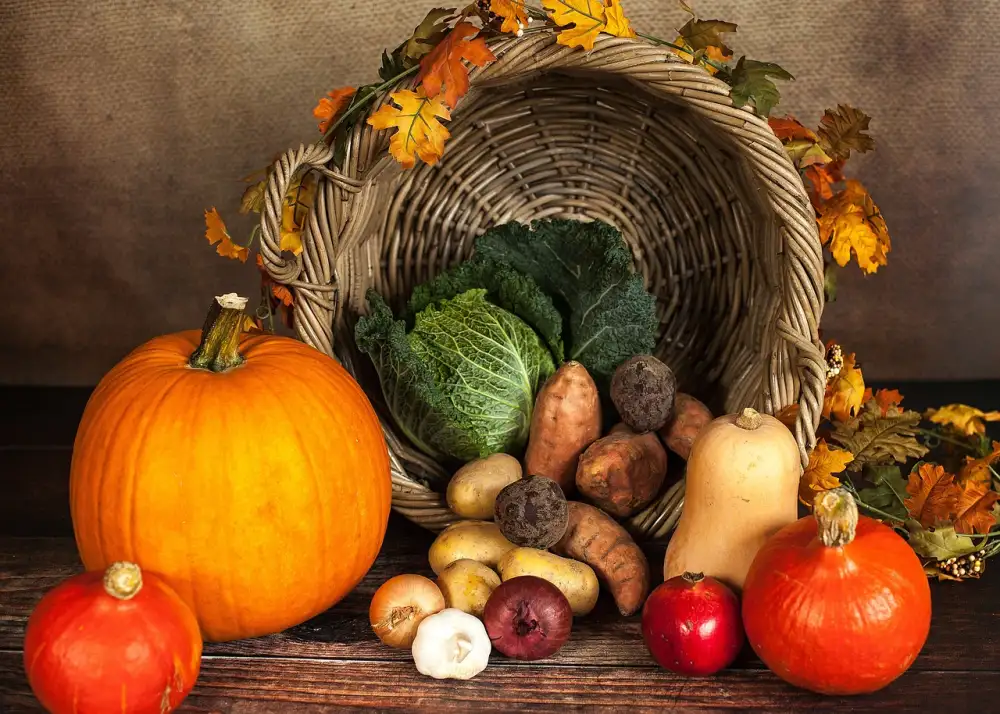Discover the Authentic Flavors of Saag: A Delectable Indian Dish Recipe

- Understanding Saag: What Makes It Unique and Delicious
- The Essential Ingredients for Saag: Unveiling the Secrets of Authentic Indian Flavors
- Step-by-Step Recipe for Saag: Mastering the Art of Cooking this Traditional Dish
- Tips and Tricks for Perfecting Saag: Elevating Your Culinary Skills
- Serving and Pairing Saag: Enhancing the Dining Experience with Complementary Dishes
- Saag Variations: Exploring Different Regional Twists on this Classic Indian Dish
- Health Benefits of Saag: Nourishing Your Body with Nutrient-Rich Ingredients
- Saag FAQs: Answering Common Questions About this Popular Indian Recipe
Saag, a beloved dish from Indian cuisine, is a true culinary delight that tantalizes the taste buds with its rich and authentic flavors. This traditional dish has been enjoyed for centuries and continues to be a staple in Indian households and restaurants around the world. Saag is a celebration of fresh greens, aromatic spices, and creamy textures that come together to create an unforgettable dining experience. Join us on a journey to discover the magic of saag and unlock the secrets of Indian culinary excellence.
Understanding Saag: What Makes It Unique and Delicious
Saag is a traditional Indian dish that stands out for its unique and delicious flavors. What sets saag apart is its use of leafy greens, such as spinach, mustard greens, or fenugreek leaves. These greens are cooked down with aromatic spices like cumin, coriander, and turmeric to create a vibrant and fragrant dish.
The combination of the earthy greens and the warm spices gives saag its distinct taste. The flavors are well-balanced, with the bitterness of the greens complemented by the richness of ghee or butter. This creates a velvety texture that is both comforting and satisfying.
Saag also showcases the art of Indian cooking by incorporating various techniques. The greens are blanched before being pureed or finely chopped, resulting in a smooth consistency. This method helps retain the vibrant green color while intensifying the flavors.
The addition of yogurt or cream adds a creamy element to saag, enhancing its richness. It also helps balance out any spiciness from chili peppers that may be used in the recipe.
Overall, what makes saag unique and delicious is its harmonious blend of flavors and textures. It's a dish that celebrates the natural goodness of leafy greens while showcasing the complexity of Indian spices.
The Essential Ingredients for Saag: Unveiling the Secrets of Authentic Indian Flavors
To create an authentic and flavorful Saag, it is crucial to have the right ingredients. The key components that make Saag unique are fresh leafy greens such as spinach, mustard greens, or fenugreek leaves. These greens provide a vibrant color and earthy taste to the dish.
In addition to the greens, onions, garlic, ginger, and green chilies are essential for adding depth and spice to the Saag. Ghee or clarified butter is used for sautéing the aromatics and enhancing the richness of flavors.
To achieve the distinct Indian taste, a blend of aromatic spices is necessary. Cumin seeds, coriander powder, turmeric powder, garam masala, and red chili powder are commonly used in Saag recipes. These spices lend a warm and fragrant aroma to the dish.
For added creaminess and richness, dairy products like yogurt or cream can be incorporated into the Saag. This helps balance out the heat from the spices while creating a velvety texture.
To unlock the full potential of flavors in Saag, it is important to use high-quality ingredients and ensure they are cooked properly. By understanding these essential ingredients, you can unravel the secrets behind creating an authentic and delicious Saag that will tantalize your taste buds.
Step-by-Step Recipe for Saag: Mastering the Art of Cooking this Traditional Dish
To master the art of cooking Saag, follow this step-by-step recipe:
- Heat oil in a pan and add cumin seeds, ginger, and garlic. Sauté until fragrant.
- Add chopped onions and cook until golden brown.
- Stir in chopped tomatoes, turmeric powder, and red chili powder. Cook until the tomatoes are soft.
- Add finely chopped spinach leaves and cook until wilted.
- In a separate pan, heat ghee and add fenugreek leaves. Sauté for a minute.
- Transfer the cooked spinach mixture to a blender and blend until smooth.
- Return the blended mixture to the pan and simmer for 10 minutes.
- Add garam masala, salt, and cream to enhance the flavors.
- Cook for another 5 minutes on low heat, stirring occasionally.
- Serve hot with naan or rice.
With these simple steps, you can create a delicious Saag that will impress your family and friends with its authentic flavors!
Tips and Tricks for Perfecting Saag: Elevating Your Culinary Skills
To elevate your culinary skills and perfect the art of making saag, here are some tips and tricks:
1. Use fresh ingredients: Opt for fresh spinach, mustard greens, or any other leafy greens to enhance the flavors and textures of your saag.
2. Sauté the spices: Toasting the spices in ghee or oil before adding them to the saag will unlock their full potential, infusing a deep and aromatic flavor into the dish.
3. Don't overcook the greens: To retain their vibrant color and nutrients, cook the greens just until they wilt. Overcooking can result in a dull-colored saag with a mushy texture.
4. Blend it right: Use a blender or immersion blender to puree the cooked greens and spices into a smooth consistency. This will give your saag a velvety texture that is both visually appealing and delightful on the palate.
5. Add cream or yogurt: For a creamy and rich saag, stir in some heavy cream or yogurt towards the end of cooking. This will balance out the flavors and add a lusciousness to the dish.
6. Temper with spices: Elevate your saag by tempering it with whole spices like cumin seeds, mustard seeds, or fenugreek seeds in hot oil or ghee. This technique adds an extra layer of complexity to the flavors.
7. Adjust seasoning: Taste your saag throughout the cooking process and adjust salt, spices, or any other seasonings according to your preference. Remember, balance is key!
By following these tips and tricks, you can take your saag from good to exceptional, impressing yourself and others with your culinary prowess.
Serving and Pairing Saag: Enhancing the Dining Experience with Complementary Dishes
Saag, with its rich and creamy texture, pairs beautifully with a variety of dishes, elevating the dining experience to new heights. To enhance the flavors of saag, consider serving it alongside fragrant basmati rice or freshly baked naan bread. The combination of saag and rice creates a comforting and satisfying meal, while the soft and fluffy naan bread adds a delightful contrast in texture.
For those looking to add some protein to their meal, saag can be paired with succulent tandoori chicken or tender lamb curry. The smoky flavors of tandoori chicken perfectly complement the earthy tones of saag, creating a harmonious balance of flavors. Similarly, the aromatic spices in lamb curry enhance the richness of saag, resulting in a truly indulgent culinary experience.
To add a refreshing element to your saag dish, consider serving it with a side of cucumber raita or tangy pickles. The coolness of cucumber raita helps balance out the heat from spices used in saag, while pickles provide a burst of tanginess that cuts through the richness of the dish.
For those seeking a vegetarian option, pairing saag with paneer tikka or vegetable biryani is an excellent choice. Paneer tikka, made from marinated and grilled Indian cottage cheese, adds a creamy and slightly smoky flavor that complements the velvety texture of saag. Vegetable biryani, on the other hand, provides an array of aromatic spices that enhance the overall taste profile.
By carefully selecting complementary dishes to serve alongside saag, you can create a well-rounded meal that will leave your taste buds satisfied and craving for more. Experiment with different combinations to find your perfect pairing and take your culinary adventure to new heights.
Saag Variations: Exploring Different Regional Twists on this Classic Indian Dish
Saag, a classic Indian dish, has various regional variations that add unique flavors and textures to this beloved recipe. In Punjab, the saag is often made with mustard greens, giving it a slightly pungent taste. In Rajasthan, the addition of fenugreek leaves adds a bitter note to the dish. In Bengal, saag is prepared using spinach and mustard oil for a distinct tangy flavor. These regional twists on saag allow you to explore the diverse culinary traditions of India and savor the different nuances of this delectable dish.
Health Benefits of Saag: Nourishing Your Body with Nutrient-Rich Ingredients
Saag is not only a delicious dish, but it also offers numerous health benefits. Packed with nutrient-rich ingredients like spinach, mustard greens, and fenugreek leaves, saag is a powerhouse of vitamins and minerals. These leafy greens are high in antioxidants, which help protect the body against free radicals and reduce the risk of chronic diseases. Additionally, saag is an excellent source of iron, calcium, and vitamin C, which promote healthy bones and boost the immune system. Incorporating saag into your diet can contribute to overall well-being and nourish your body from within.
Saag FAQs: Answering Common Questions About this Popular Indian Recipe
Saag is a traditional Indian dish made from leafy greens such as spinach, mustard greens, or fenugreek leaves. It is cooked with aromatic spices and often includes ingredients like onions, garlic, ginger, and tomatoes.
How is Saag different from other Indian dishes?
Saag stands out for its unique combination of flavors and textures. Unlike other curries, saag has a smooth and creamy consistency due to the pureed greens. It also has a distinct earthy taste that comes from the combination of spices used in its preparation.
Can I use frozen greens for Saag?
Yes, you can use frozen greens if fresh ones are not available. However, keep in mind that fresh greens will yield a more vibrant flavor and color to your saag.
Is Saag vegan-friendly?
Yes, saag can be easily made vegan by using oil instead of ghee (clarified butter) and skipping the addition of cream or yogurt at the end.
Can I substitute the leafy greens in Saag?
Absolutely! While spinach is commonly used in saag recipes, you can experiment with other leafy greens like kale or collard greens to add your own twist to the dish.
How long does it take to cook Saag?
The cooking time for saag may vary depending on the type of greens used and their tenderness. On average, it takes about 30-40 minutes to cook saag until the flavors meld together perfectly.
Can I freeze leftover Saag?
Yes! Leftover saag can be stored in an airtight container in the freezer for up to 3 months. Just make sure to thaw it properly before reheating.
What are some common accompaniments for Saag?
Saag pairs well with various Indian bread like naan or roti. It also goes wonderfully with steamed rice or jeera rice (cumin rice). Additionally, you can serve it with a side of yogurt or pickles for added flavor.
Can I adjust the spice level in Saag?
Yes, the spice level in saag can be adjusted according to your preference. If you prefer it milder, reduce the amount of chili powder or omit it altogether. Similarly, if you like it spicier, add more chili powder or fresh green chilies.
Is Saag a healthy dish?
Yes, saag is highly nutritious as it contains an abundance of vitamins, minerals, and antioxidants from the leafy greens. It is also low in calories and high in fiber, making it a great choice for those looking to maintain a healthy diet.
By answering these common questions about saag, we hope to inspire you to try this delectable Indian dish and explore its rich flavors in your own kitchen!
In conclusion, saag is a dish that truly embodies the rich and diverse flavors of Indian cuisine. By understanding its unique ingredients and mastering the art of cooking it, you can unlock a world of culinary possibilities. Whether you prefer the traditional recipe or want to explore regional variations, saag offers a delicious adventure for your taste buds. So, embrace the flavors of saag and embark on a culinary journey that will delight and satisfy your senses. Get ready to elevate your cooking skills and immerse yourself in the authentic tastes of India.
Published: 29. 11. 2023
Category: Food



